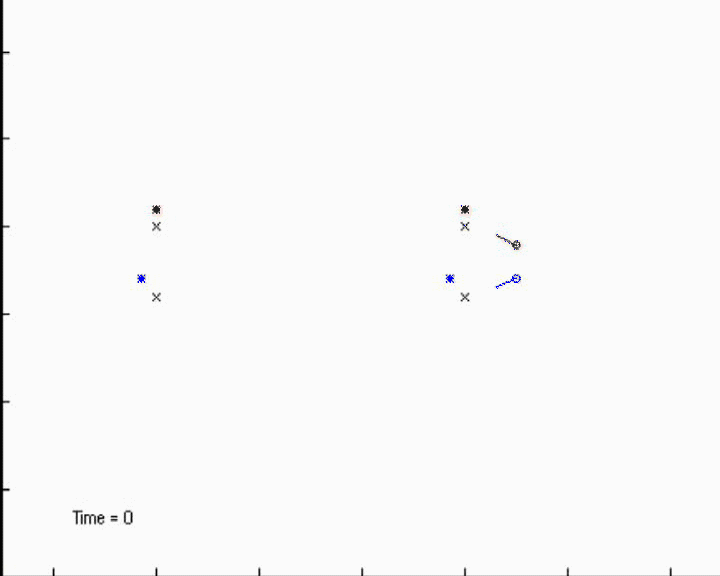
Quicktime movie (~900KB)
This page includes links to various animations. These animations are outputs from a game theory based algorithm for management of mobile sensors and from a reference algorithm. In the game theory algorithm, sensor agents negotiate over offers, i.e., target allocations (assigning targets to sensors). For every offer (allocation) a measurement reward and measurement derivative can be calculated. The reference algorithm has a "greedy approach", i.e., calculates the most rewarding allocation (i.e., assignment of targets to sensors) and moves in the direction of the allocation dependent gradient. As we see below, the greedy approach, although fast, sometimes run into difficulties.
| Symbol | Explanation |
|---|---|
| o - coloured ring | mobile sensor; every sensor has a unique colour |
| x - cross | target |
| * - coloured star | the star indicates that the target below is being tracked and its colour corresponds to the sensor or sensors which currently track it. |
| - - coloured line | show the current direction of the mobile sensor |
| In this experiment we study how a sensor acts, i.e., how it positions itself, when it tracks two targets. |  Quicktime movie (~900KB) |
| We define a greedy deadlock to be a situation where a greedy allocation of targets forces a sensor to stand still. This typically happens when a sensor allocates targets which are moving in opposite directions. The game theory negotiation algorithm, on the other hand, considers not only allocations that give high rewards, but also those that give high reward derivatives, and can easily escape the deadlock. | 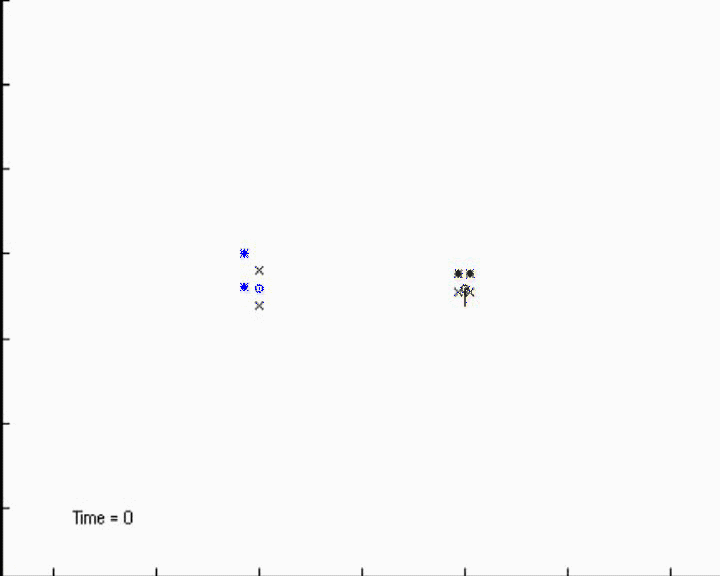 Greedy Quicktime movie (~600KB) |
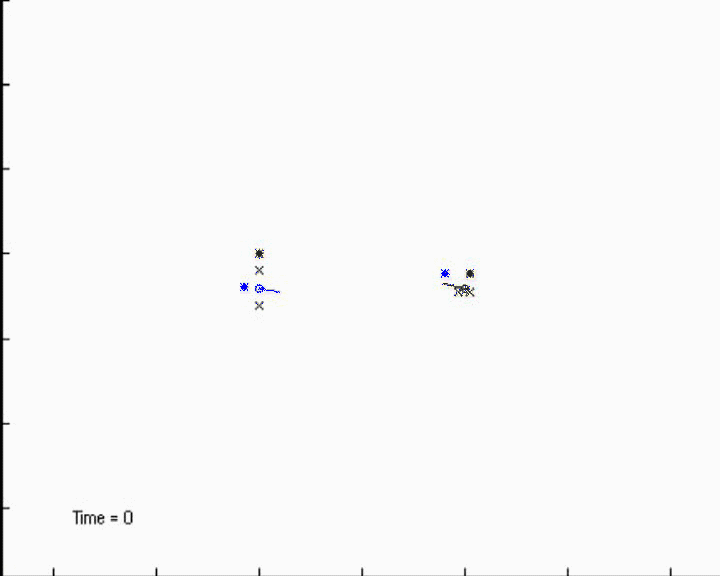 Negotiation Quicktime movie (~600KB) |
| Here the terrain of the environment of the mobile sensors is considered. The rectangular box in the simulation represents an area in which the terrain is rough. A mobile sensor which enters the area has to decrease its speed. The greedy algorithm forces the sensors to enter the area which makes them lose touch with the targets they are tracking. The negotiation algorithm on the other hand considers terrain conditions and is able to switch targets between the sensors and establish a more efficient pursuit. | 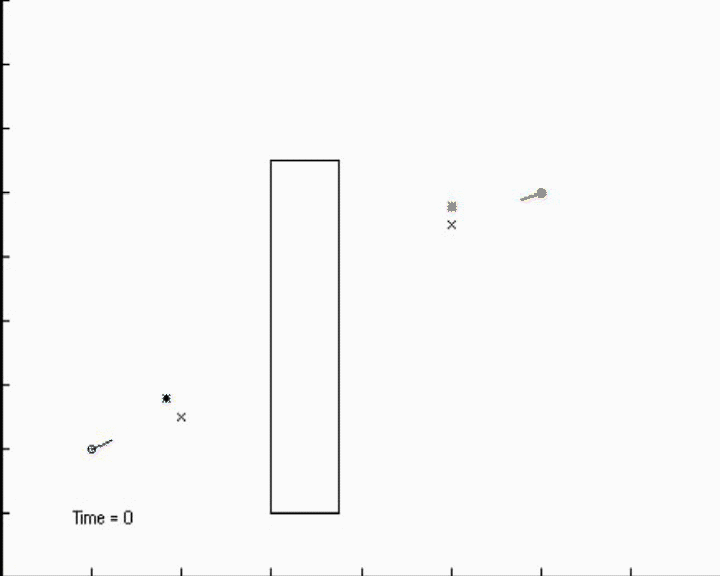 Greedy Quicktime movie (~500KB) |
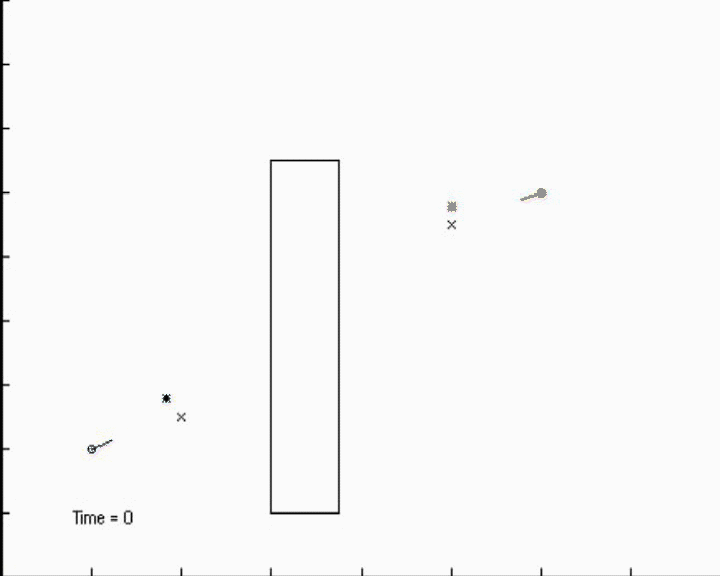 Negotiation Quicktime movie (~420KB) |
| In this experiment, three sensors track four targets. The greedy algorithm yields better measurements than the negotiation algorithm, but the negotiation algorithm allows, to a greater extent, sensors to share targets, hence, increasing the robustness of the system (e.g., if one of the sensors stops functioning properly, there might be other sensors measuring its targets). | Greedy AVI movie (~150KB) |
Negotiation AVI movie (~120KB) |